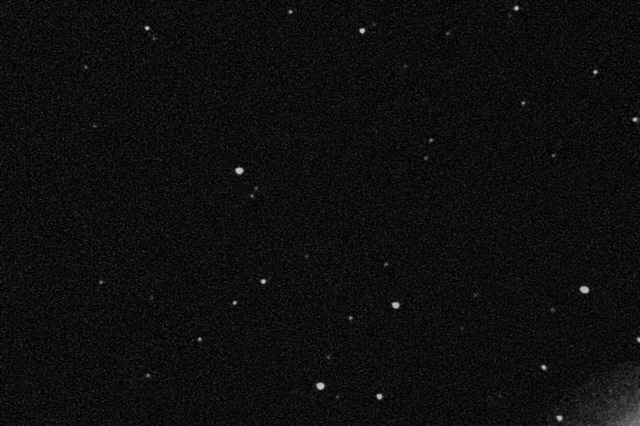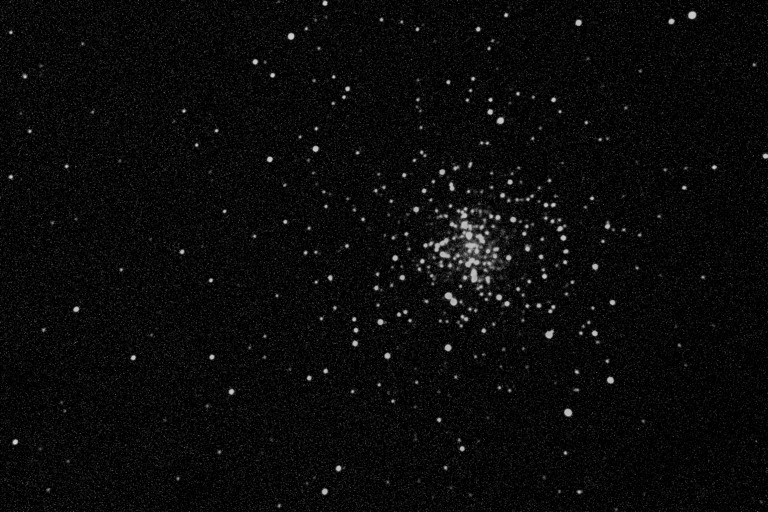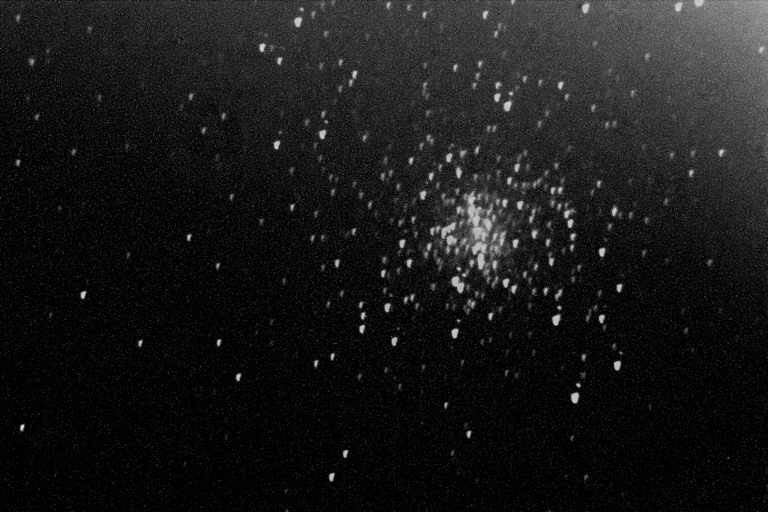201XT Trials
May 30, 2003 On
a partly cloudy night I decided to run some
guiding tests to try to come to grips with
the excentricities on the 201xt. Here's how
it went:
Test 1 Description:
Collimated the guide scope with the main
scope, put Arcturus on the guide chip and
started taking some guided 5 minute unbinned
exposures.
Test 1 Results:
Of the 5 images I took, 4 had round stars,
but all 4 showed signs of star elongation in
the lower right corner. It was also apparent
that focus was soft with faint stars showing
as fuzz instead of points. In shorter
exposures this was not noticeable, so it
looks like focus is even more critical with
longer exposures.
Test 2 Description:
In the second series of tests I tried guiding
on fainter stars. I found that I could not
establish guiding on any star that required
more than a 3 second exposure. Once I had
found a suitable star requiring only 3
seconds exposure, I ran a series of 10 minute
exposures.
Test 2 Results:
Of the 3 10 minute exposures I took, all had
round stars, and all showed the focussing and
star elongation issues already noted under
test 1. These issues are demonstrated in this
10 minute exposure from test 2:

Test 3 Description:
I finally decided to try guided images of a
DSO. M4 presented itself as a decent target.
I was unable to find a suitable guide star
and had to point the guidescope at a star
outside the FOV of the imaging area. Using
the 3 point rings to find and line up a star
on the guiding chip was NOT easy. There has
to be a better way to point the guide scope.
Once guiding was established, I got 9 5
minute shots of M4.
Test 3 Results:
The first image had star trails, I don't
think the guider had settled down. The next 5
images were good, then the guider lost the
guidestar because of clouds so the final 3
images were unguided. Here are sample guided
and unguided results from this session:


May 30, 2003 Testing
Summary: As demonstrated by the images
above, guiding makes a big difference and clearly
the 201xt is capable of delivering reasonable
results once guiding has been established.
Establishing guiding is the difficult part
though. Here is a summary of lessons and issues
resulting from these tests:
1) The 201xt works best with
exposures of 3 seconds or less.
2) The guidescope must be pointed to
a guide star bright enough to use 3 second or
less guide exposures. This sometimes means
pointing the guidscope at stars that are out of
the image field of view. To do this it is
necessary to use the 3 point rings mounting the
guidescope to the main scope. Finding and
centering the selected star with the 3 point
rings is difficult. A better method for pointing
the guidescope is needed.
3) Focus at long exposure lengths is
more critical; fainter stars can come out fuzzy
instead of as points. It is necessary to refine
focus using longer exposure times before
beginning the actual imaging session.
4) Many images showed star
elongation, especially in the lower right corner
of the images. Need to determine source, polar
alignment off? Guide scope flexure?
Circa October
2002:
We've had some serious
cloud cover this Fall greatly limiting my
time at the observatory. That said, I've made
some progress with the Pictor 201XT.
Focussing the 201xt:
I read somewhere that a
parfocal eyepiece can be made using a
standard Meade 26mm eyepiece and a
parfocalizing ring, leaving 1/8"
of space at the top of the eyepiece.
By using a bright star, I was getting
a brightness reading from the 201xt
of between 0 and 5 when focused with
the 26mm (range is 0-99). I also read
that the Meade 9mm reticle eyepiece
is parfocal with the 201xt. I don't
have one, but I do have a Meade 9mm
MA eyepiece that came with the ETX70.
When I focussed for the 9mm I
instantly got a reading of 99!
So it seems that the 9mm
MA eyepiece is parfocal with the
201xt.
Centering the target
star in the 201XT:
After the focussing
breakthrough I've been playing around
with centering the guide star. I've
been toying with the slow motion
controls to get a centered reading
(55). I don't have an adjustable
reticle eyepiece, so I used a
parfocalizing ring to make my 12mm
reticle eyepiece parfocal with the
201xt. I've been drawing the view in
the 12mm eyepiece when I get a
centered reading. It appears that the
201xt chip needs the target to be
slightly left and slightly above
center as seen through the parfocal
12mm.
Next steps:
Now that I think I can
focus and center a bright star, I
need to try it with a dimmer star. A
brightness reading of between 20 and
40 is suggested as the right range.
Assuming I have success with a dimmer
star, I'll need to get the 201xt
talking to the LX200, callibrate,
then guide. If I can get it guiding
without errors and keep a subject
centered at high magnification, I'll
be ready to try extended exposures
with the SAC7, can't wait!
<< back
|



